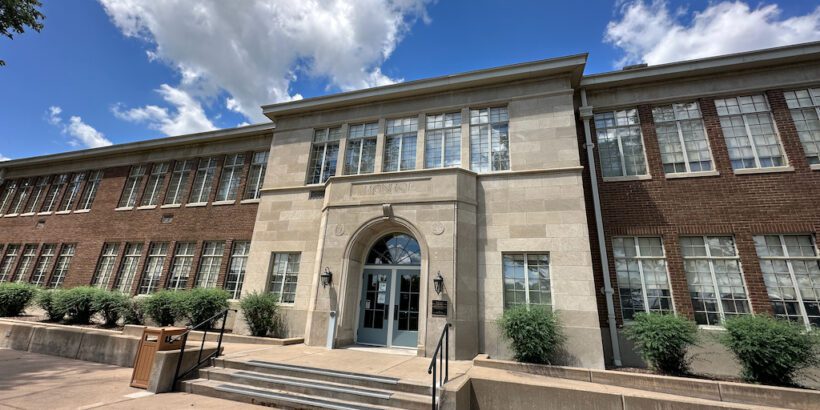Numerous pivotal moments marked the Civil Rights era, but among the crucial landmarks in the desegregation movement is Monroe Elementary School, a school that was deeply connected to the Brown v. Board of Education Supreme Court decision.
Today, the site is part of the Brown v. Board of Education National Historical Park, offering visitors an opportunity to delve into the intricacies of this historic decision.
Here, you can explore the background and the subsequent events that unfolded during this crucial period in the fight for civil rights and I’ll tell you more below.
Brown v. Board of Education background
Brown v. Board of Education was a landmark Supreme Court case that played a pivotal role in the desegregation of public schools in the United States.
This legal milestone traces its roots back to a series of lawsuits brought against the Board of Education of the City of Topeka, Kansas.
Thirteen Black parents, standing up for 20 children, took legal action, with Oliver Brown as the primary plaintiff. His daughter Linda had faced rejection from Sumner Elementary School, an all-White institution in Topeka, which set the stage for the legal battle.
As a result, Linda was directed to Monroe Elementary School, one of four segregated schools for Black children in Topeka. (It now serves as the Kansas site for the Brown v. Board of Education National Historical Park.)
Six parents of students attending Monroe Elementary School in 1949 actively participated in the lawsuit that ultimately reshaped the course of American education.
These plaintiffs argued that segregated public schools violated the Equal Protection Clause of the Fourteenth Amendment, which guarantees equal rights under the law.
Their objective in Brown v. Board of Education was to challenge the entrenched “separate but equal” doctrine, a concept rooted in the 1896 Supreme Court ruling of Plessy v. Ferguson. This doctrine had sanctioned racial segregation, provided the separate facilities were considered equivalent.
The case consolidated lawsuits from DC and various states, including South Carolina, Virginia, and Delaware, and eventually reached the Supreme Court.
In May 1954, Chief Justice Earl Warren delivered the unanimous decision of the Supreme Court, declaring that racial segregation in public schools was inherently unequal and, therefore, unconstitutional.
We conclude that in the field of public education the doctrine of “separate but equal” has no place. Separate educational facilities are inherently unequal. Therefore, we hold that the plaintiffs [are] deprived of the equal protection of the laws guaranteed by the Fourteenth Amendment.
— Brown, 397 U.S. at 495
This historic ruling marked a turning point in the struggle for civil rights and paved the way for subsequent legal and social efforts to end racial segregation in various aspects of American society.
Although the decision in Brown v. Board of Education laid the groundwork for the civil rights movement, there were legal criticisms.
Critics argued that the Court was overstepping its role by effectively legislating social change from the bench. They believed that such significant societal transformations should be left to the legislative and executive branches rather than being dictated through judicial interpretation.
And of course, after the ruling things didn’t change overnight. In fact, it got pretty crazy.
Arkansas Governor Orval Faubus deployed the Arkansas Army National Guard to obstruct the entry of nine black students during the “Little Rock Nine” incident in 1957.
In Alabama, Governor George Wallace personally blocked the door to the University of Alabama in 1963 until confronted by General Henry V. Graham of the Alabama National Guard, whom President John F. Kennedy had ordered to intervene.
But the worst case was probably in Prince Edward County Virginia where local authorities responded to the Supreme Court’s desegregation ruling by completely shutting down public schools from 1959 to 1964, leaving thousands of Black students without access to education for five years.
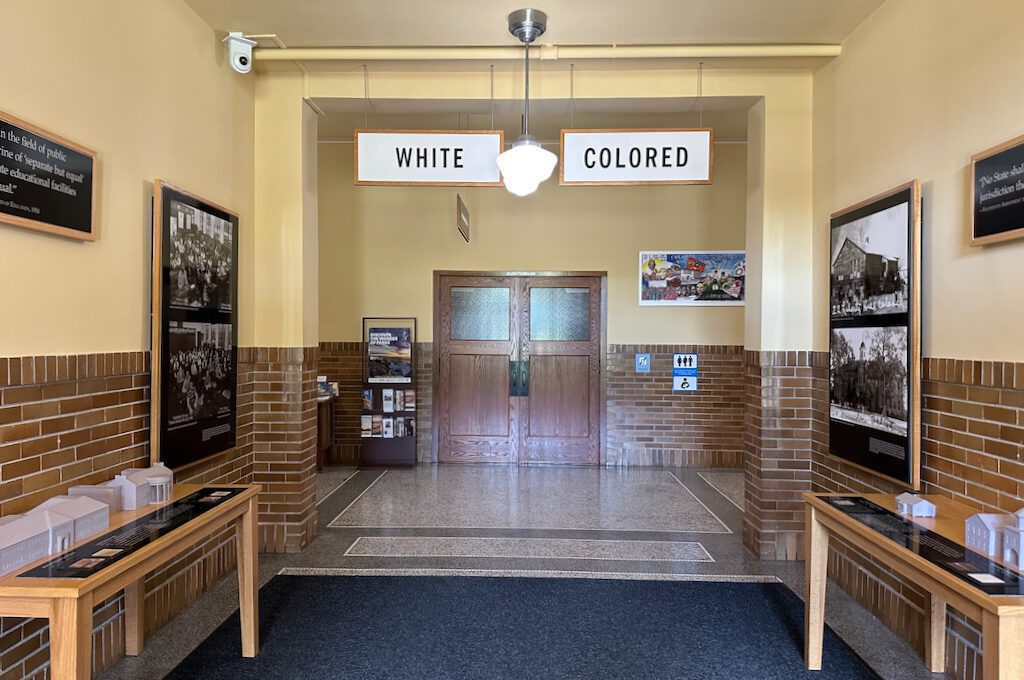
Visiting the Brown v. Board of Education National Historical Park
We rolled into town on a scorching August afternoon, pulling up in front of the once-operational elementary school (closed in 1975). It’s a beautiful two-story brick and limestone building in the Italian Renaissance Revival style, built in 1926.
Supposedly, Topeka was selected because the Black schools in the area were well-performing compared to their White counterparts. This selection would show the issue wasn’t about unequal treatment but rather about the inherent problem of segregation itself.
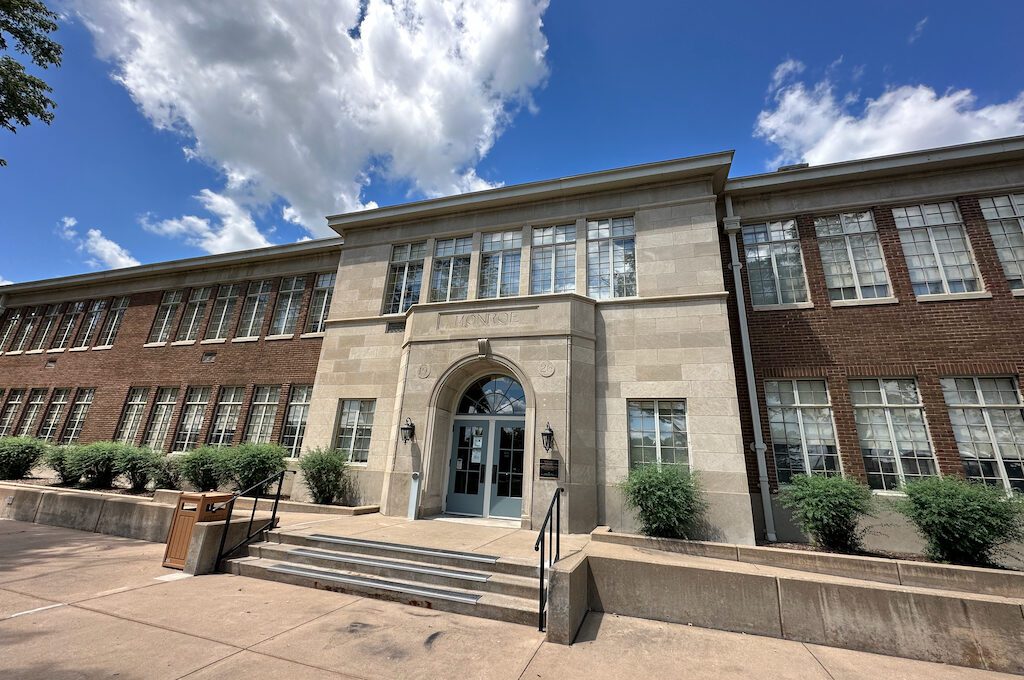
Right nearby, there’s this striking 130′ x 30′ mural that’s definitely worth a look. Directed by Kansas City Artist Michael Toombs, it’s a visual testament to unity and equality, sending a powerful message that adds to the whole experience.

In front of the school, immediately there are some interpretive panels to check out.
One of the most interesting things I found out here was that none of the Black teachers signed on as plaintiffs (I didn’t realize they would/could).
Also, Black teachers and educators had pretty mixed feelings about desegregation.
The process of desegregating schools often led to the closing of all-Black schools, and Black teachers were concerned about the potential loss of their jobs. The fear was that desegregation might lead to the displacement of Black teachers and the dissolution of Black educational institutions.
Consider that over 38,000 Black teachers in the South and border states lost their jobs following Brown. Though a complex situation, it’s one of the often overlooked costs of the Supreme Court decision.
Others were concerned about losing “the central role that schools played in the formation and growth of black communities during the century following emancipation.”
Additionally, there were concerns about the quality of education that Black students would receive in desegregated schools.
Black teachers had played a crucial role in providing education to Black students, and they worried that the integration of schools might not necessarily lead to an improvement in the overall educational experience for Black children.
Some feared that Black students might face discrimination or be treated unfairly in predominantly White schools, impacting their academic and social development.
We would not be in favor of changing our present set-up of segregated elementary schools without more evidence that our children would do as well and be as happy as they are now.
Topeka Council of Colored Parents and Teachers, April 23, 1948
We strolled our way inside, and it’s quite fascinating to witness the transformation of the first floor of the old elementary school into a museum. There’s a unique charm to walking down those elementary school hallways that seems to transport you back in time.
Plus, you can explore the gymnasium and classrooms, delving deeper into the details of the case. It’s a truly immersive experience that adds a special touch to the whole visit.
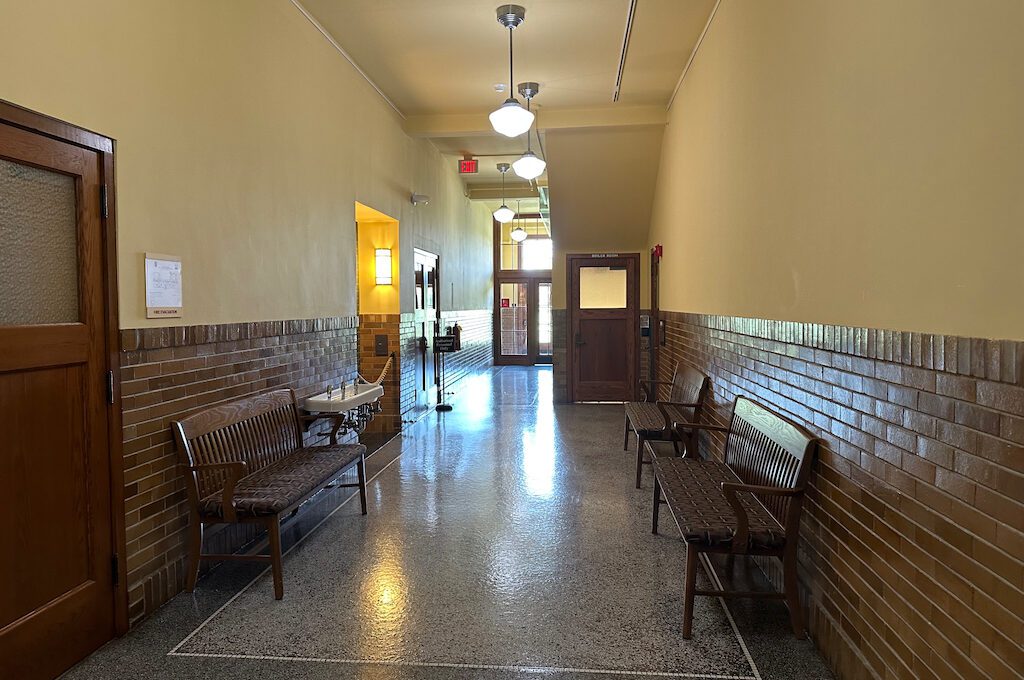
It’s a good idea to start off with an introductory film or two in the former gymnasium and then make your way through the different exhibit halls.
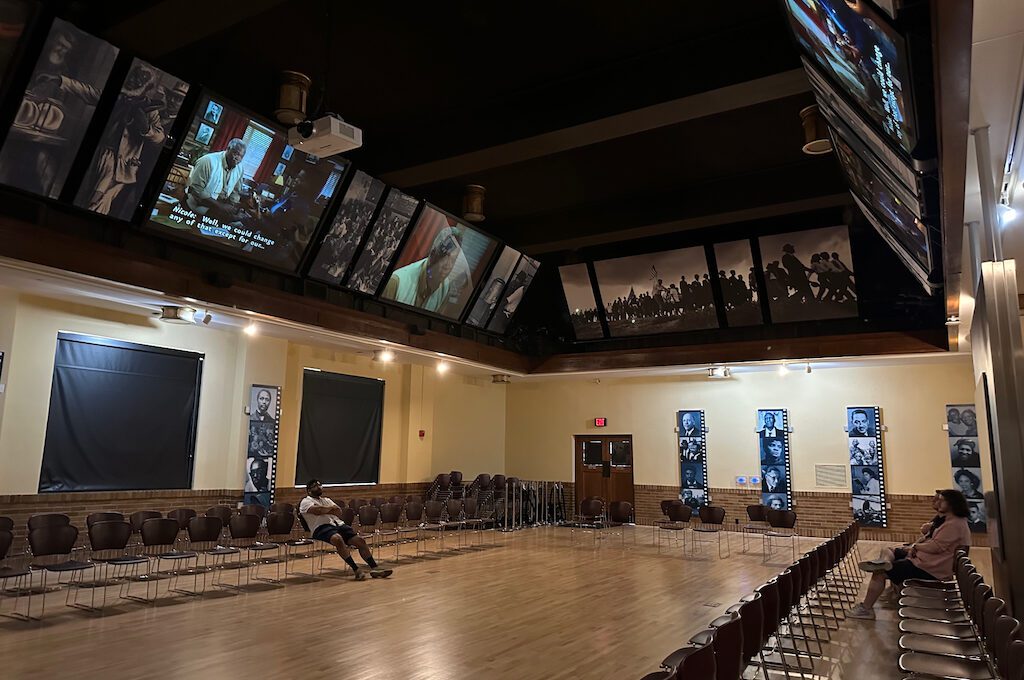
In one of the exhibit halls, “The Long Road to Brown” provides a comprehensive walkthrough of the Brown v. Board story.
Information panels and interactive exhibits guide you through the sophisticated legal strategies and the convergence of various cases that culminated in this landmark national case reaching the Supreme Court. It’s an informative dive into the intricacies and background of the legal journey.
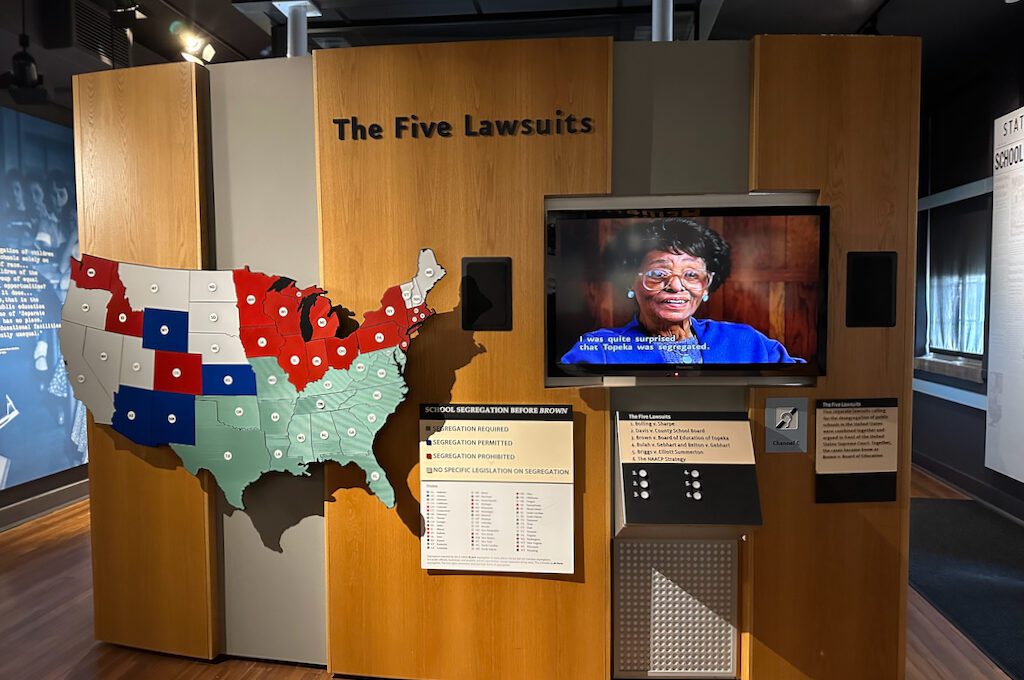
One of the most fascinating things to see is one of the Clark dolls from the study used in the trial.
In the 1930s, Dr. Kenneth Clark conducted research known as the “doll tests.” These experiments involved presenting Black and White dolls to Black children and asking them to express preferences or associations with certain characteristics.
The results consistently showed that many Black children associated positive qualities with the White dolls and negative qualities with the Black dolls, which was taken to reveal the profound psychological impact of segregation and racial discrimination.
The Clarks’ research helped provide scientific evidence to support the argument that segregation had a detrimental effect on the self-esteem and mental well-being of Black children (it’s worth noting some people question the methodology of the research).
No photos are allowed of the doll but it was cool to see.
While navigating through the exhibits, keep in mind that it was an intensely contentious period. Be ready for some potentially jarring media from the 1950s that provides a raw and unfiltered glimpse into the atmosphere of that time.
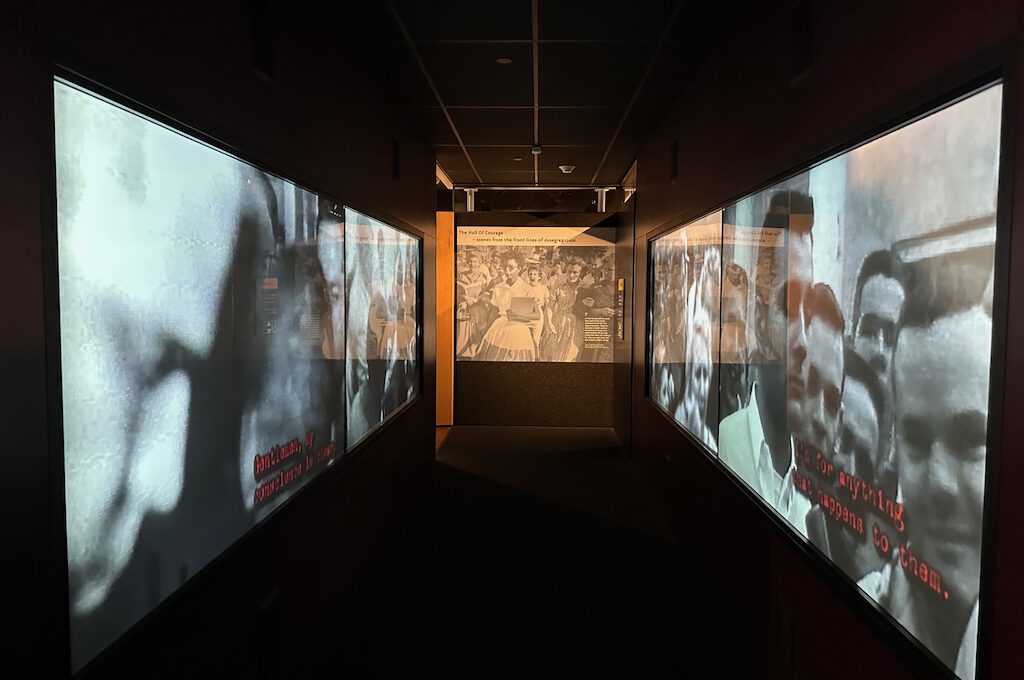
You can then venture into the other exhibit hall, offering insights into the subsequent battle for civil rights and the far-reaching impact of Brown in various spheres. Explore the advocacy efforts of groups like the National Association for the Advancement of Colored People (NAACP) on behalf of Black Americans.
Inside one of the preserved classrooms, complete with a cozy fireplace and a sizable blackboard, it’s like stepping straight back into the 1950s. The atmosphere is immersive.
Within this setting, there’s a trial exhibit that delves into the employment concerns faced by Black teachers. It allows you to grasp the turbulence and stress of that period as they anxiously awaited the Supreme Court’s decision, understanding how it could significantly impact their livelihoods.
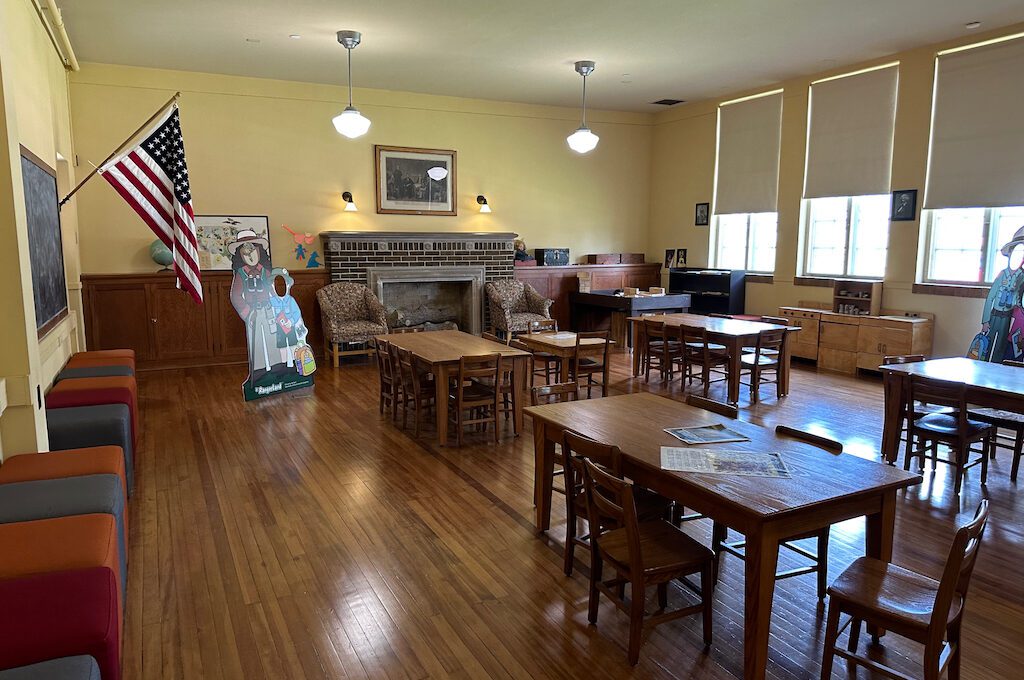
Additionally, there are nearby destinations worth exploring, such as the John and Mary Ritchie House. John Ritchie, an American abolitionist born on July 17, 1817, played a crucial role in Kansas and served in the Union Army during the American Civil War.
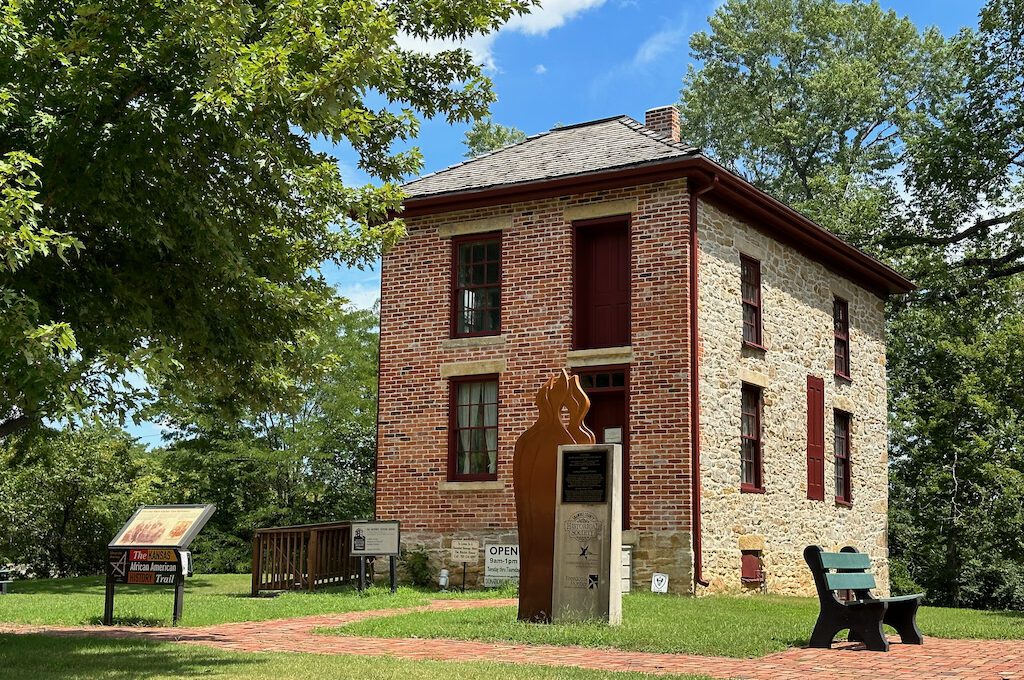
Ritchie and his wife, Mary Ritchie, played notable roles in the tumultuous chapter of history known as Bleeding Kansas, actively opposing the expansion of slavery in the Kansas Territory.
Defying federal law, they transformed their property into a haven for fugitive slaves, offering refuge and support on the Underground Railroad.
Post-Civil War, Topeka saw an influx of newly emancipated African Americans. Many acquired land from Ritchie, either through purchase or as a gesture of generosity.
Due to the burgeoning African-American population, the Topeka School District decided to establish a school for Black children in the neighborhood.
This marked the beginning of Monroe School, situated in the area known as “Ritchie’s Addition.”
Final word
I thought this was one of the more fascinating places to visit.
It offers a fantastic opportunity to delve into the history of desegregation efforts in the United States. The site’s connection to the landmark Brown decision, as well as its ties to the Underground Railroad and the Civil War era, adds an extra layer of fascination.
Whether you’re a history buff, a legal scholar, or simply someone keen on the civil rights era, this ranks among the top must-visit sites.
Daniel Gillaspia is the Founder of UponArriving.com and the credit card app, WalletFlo. He is a former attorney turned travel expert covering destinations along with TSA, airline, and hotel policies. Since 2014, his content has been featured in publications such as National Geographic, Smithsonian Magazine, and CNBC. Read my bio.

